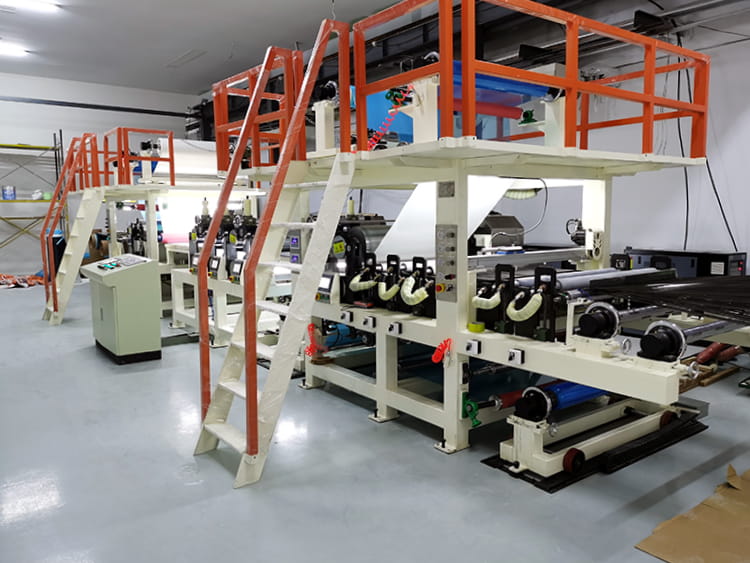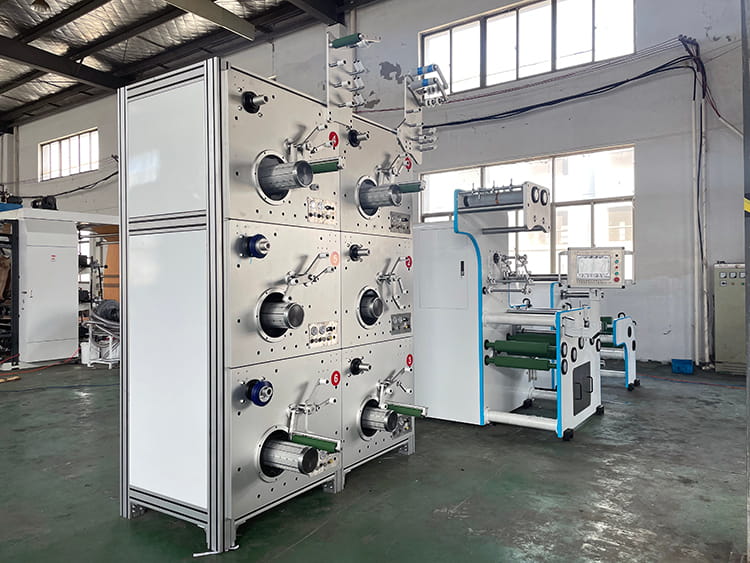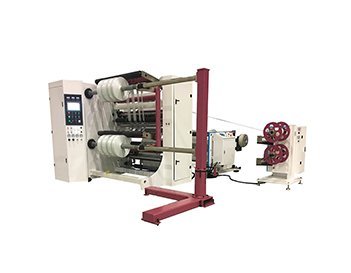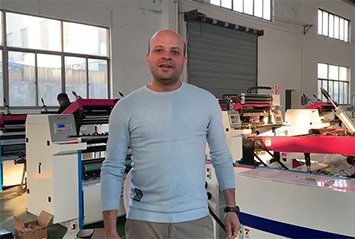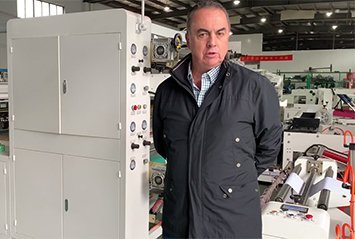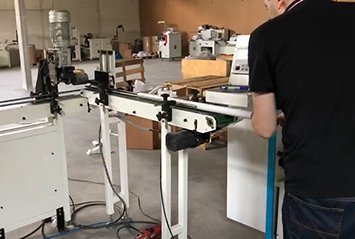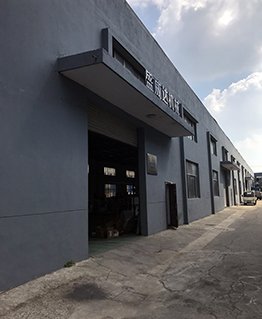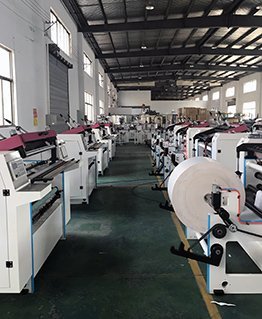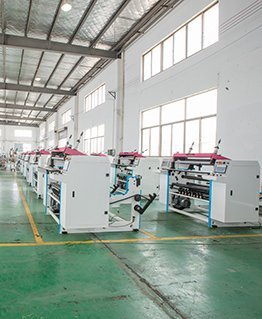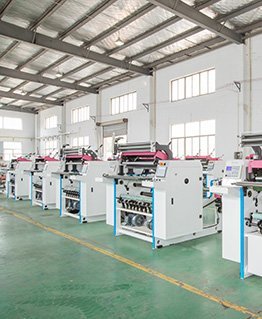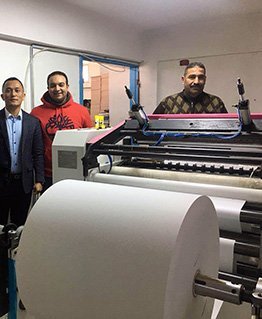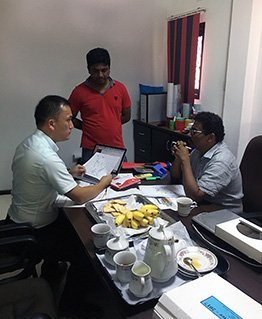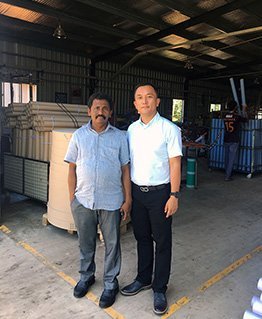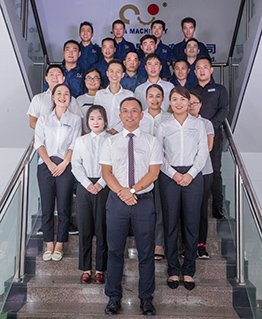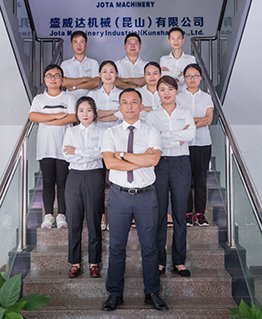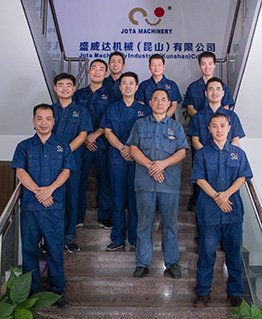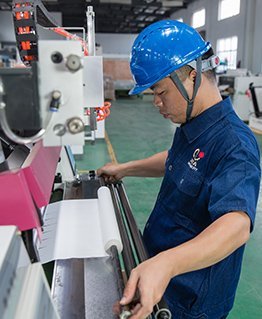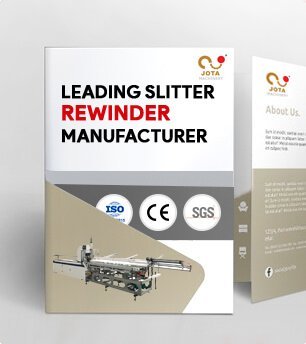CFRT Thermoplastic Reinforced Pipe Winding Machine
The manufacturing process for reinforced thermoplastic pipes involves winding continuous strands of fiberglass reinforced unidirectional thermoplastic tape around a rotating mandrel.
This is done using a specialized machine known as a pipe winding machine, which is designed to apply the tape in a precise and consistent manner.
The result is a strong, lightweight, and corrosion-resistant pipe that can be used in a wide range of applications.
These pipes are also easy to install and require minimal maintenance, making them a cost-effective choice for many industries.
Leading RTP Pipeline Manufacturing Solution Supplier
Welcome to Jota Machinery, your trusted partner in the manufacturing of high-quality RTP (reinforced thermoplastic pipe) products.
We offer a full range of services, from thermoplastic UD tape prepreg machine to UD tape slitting and winding, providing you with a comprehensive one-stop solution.
Our state-of-the-art technology and equipment, combined with our team of experienced engineers and technicians, ensure that we deliver the highest standards of quality and performance in every product we manufacture.
Whether you need RTP pipes for use in the oil and gas, chemical, or water industries, we have the expertise and capability to meet your specific requirements.
At Jota Machinery, we are committed to providing you with a seamless and hassle-free manufacturing experience.
Our customer-centric approach means that we work closely with you to understand your needs and provide tailored solutions that meet your exact specifications.
With our focus on innovation and excellence, you can trust us to deliver the highest quality RTP products that meet the most stringent industry standards.
Machining Material
- Visible high-quality components.
- Famous brands such as Siemens, Yaskawa, Delta, Schneider, Mitsubishi.
- Self-supporting CNC processed sheet metal, precision parts.
- Assembly raw materials provided by long-term cooperation suppliers.


Installation and operation user manual, wire connection diagram, tension controller guide.
Installation and operation video tutorial.
One-on-one remote video call assistance.
On-site installation and operation guidance.
- Focus Factory
- Dear Customer
- Professional Team
Around 30-45 days, mainly depends on machine type.
Sure, it is our honor to work for you.
We will offer you some parts as backup, in case any part is broken within one year, we will sent you for free.
Sure, if we have client in your country, we will offer.
CFRT Thermoplastic Reinforced Pipe Winding Machine
A brief definition of the winding machine, what is it?
Industries operating in paper and textile industries often employ enormous spools of substances in their day-to-day operations.
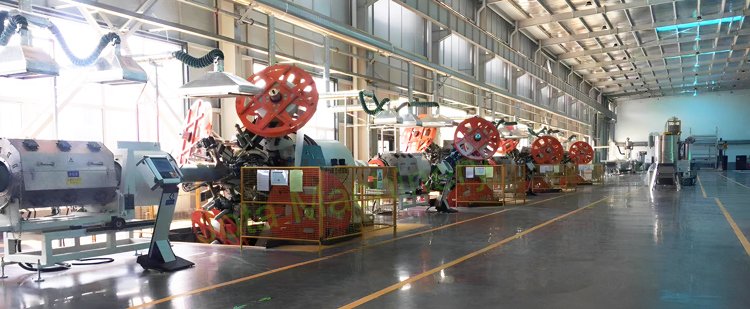
But one crucial question remains; how does a substantial amount of substance go into the pool?
The answer is straightforward: a Winding machine.
The winding machine can promptly wrap yarn, thread, wire, twine, string, paper, fabric and other materials into the industrial-size spool as required.
Types of Winding Machines
Given the numerous applications of winding machines, there are several types which you can choose from, especially when looking where to invest in a winding machine.
Generally, several but different winding machines are classified by the substances being wound or spooled. Here are some of the winding machines you are most likely to come across.
- Paper winding machine
- Spool winding machine
- Foil winding machines
- Rope winding machines
- Film winding machines.
There are other instances where the machines are arranged into classifications depending on the operations of the machines. These are;
- Carriage-style winding machines
- Shaft and shaft-less winding machines
- Cantilevered turret winding machines
What you’ve just read above are just a few selected of the various types of winding machines incorporating common and known types. Let us now get to the,
Features of winding machines
Different types of winding machines have lately come up with different features.
On that note, here is a look at some of the most helpful, and popular winding machines features.
Roll changing: The roll-changing features enable users to set the maximum diameter for spooling.
Immediately the maximum is attained, the roll-changing feature swaps out the whole spool for a different one.
Actuated Knife-cut off: This is known to typically trigger a blade which, in turn, cuts the end of the material straight away after the spool arrives at its uttermost diameter.
A point to note here is that quality blades make precise and clean cuts.
Web break detection: Some industries have sensors that monitor the material being spooled.
Most of these sensors operate by sending light beams towards the substance to detect if the light is reflected.
Automatic Splice Initiation: The automatic splicing qualities are used when creating clean cuts without any overlap. Universally, automatic splicing features are meant to increase productivity, lessen waste, and control quality.
The working Principle of a Winding Machine
A winding machine is made from amalgamating tube yarn socket, tensioner, yarn clearer and slot yarn.

The winding machine principle is that the yarn is unwound from the yarn by a guide yarn, by a lead screw, guide yarn and yarn board, which in turn passes through the tensioner.
The silk plate and gap yarn which comes after requiring that force of transmission of the screw rod, tension rod, yarn guide, and grooved cylinder, should be finally connected to the friction of the grooved cylinder, which is later wound to a cone-shaped object.
The principal objective of the winder is to rewind spools from a spinning form or a wire into more significant objects.
Winding once means you can clear the wire impurities, the yarn or defects, and enhance workflow after the course of action of equipment productivity and production, respectively.
Profession Winding Machine Operator
When handling any winding machine, operators are required to observe keenness and utmost care because of the core principles upon which the machine is based.
Generally, winding machine operators tend to wrap yarns, threads, ropes, strings and accords upon spools, bobbins and reels.
The professionals handle materials before preparing them for processing and at the same time use the winding machines for production and processing.
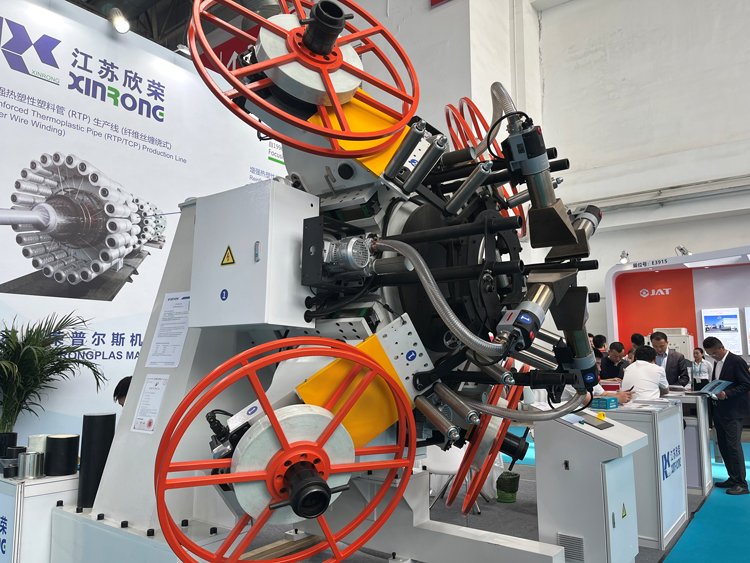
In the same manner, they execute other routine maintenance of the machinery.
You would like to know the kind of profession or career that suits you best when it comes to handling winding machines, correct?
Then you are in the right place.
Either way, whether you’re hiring an operator or yourself handling the machine, you have to check out this career test.
Type of personality – Conventional/realistic
Knowledge
- Rope lashing
Rope lashing usually involves the process of joining numerous objects such as poles together while using a wire, rope, or webbing frequently to create or secure unbending structures like a restroom or treehouse.
The different types of lashing are; round lashing, diagonal lashing and square lashing.
- Rope Manipulation
Rope manipulation that is associated with splicing and knotting should be employed.
- String Types
They are shaking elements that produce sounds in string instruments.
They are usually categorized into two, namely, the wound strings and decorative strings.
They can also be constructed from different materials in silk, nylon, steel or gut. Winding materials include gold, copper, aluminum and chrome steel.
- Type of Threads
The types of threads such as the metric thread, ACME thread, buttress thread, square thread and unified thread with all the applications and qualities are used.
Skills
- Set operation speed of manufacture machines
Expound the appropriate speed at which the manufacturing machines ought to be put in operation to provide the much-needed output during the process of manufacturing.
- Organize wires
Apply cable labels and wire markers to point out and organize the wire. Use cable lace or tie-wrap to keep the wires conjoined.
- Tend winding Machines
Set up, run and support winding machines to wrap strings or yarns of any kind onto the reels, bobbins and spools.
- Cut Filament
The filament is supposed to be cut to release the workpiece. The cutting, however, takes place after the wounding of the filament workpiece.
- Set operation speed of manufacturing machines
You should also note the importance of defining the appropriate speed for a manufacturing operation.
The objective of adequate speed is to develop the required output from the manufacturing process.
- Measure yarn count
You must be in a position to assess and at the same time measure the mass and length of the yarn to rate the finesse of sliver, roving and yarn in other measuring systems.
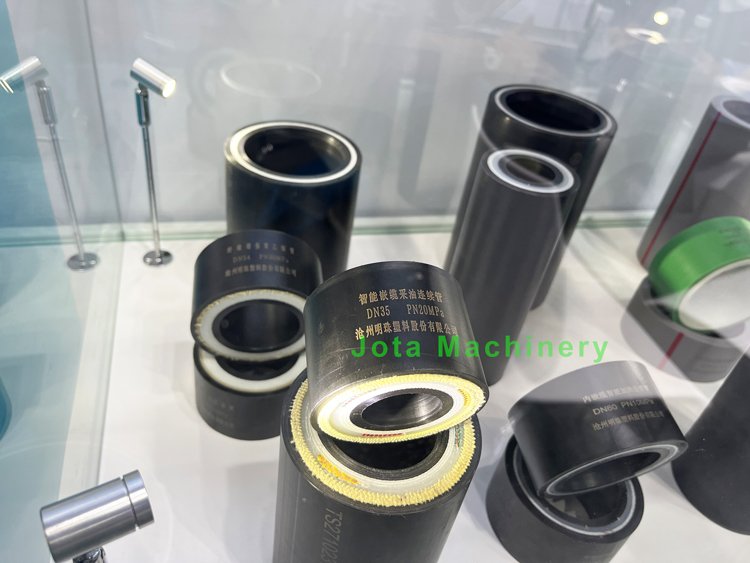
Additionally, the measurement is to enable conversion into several numbering systems such as denier, Nm, Ne, tex e.t.c
- Maintain Equipment
It would be best to regularly inspect the machine for proper maintenance and function after its usage or before use.
- Tend Spinning Machines
Operate the spinning machines while operating productivity and efficiency at the highest levels.
Jota Machinery Composite Pipe
The use of composite pipes for the gas and oil industry has been used for decades so it is not something new, and that’s a fact.
Jota Machinery engineers are realistic people, meaning, using composite in this application shows sensible perception.
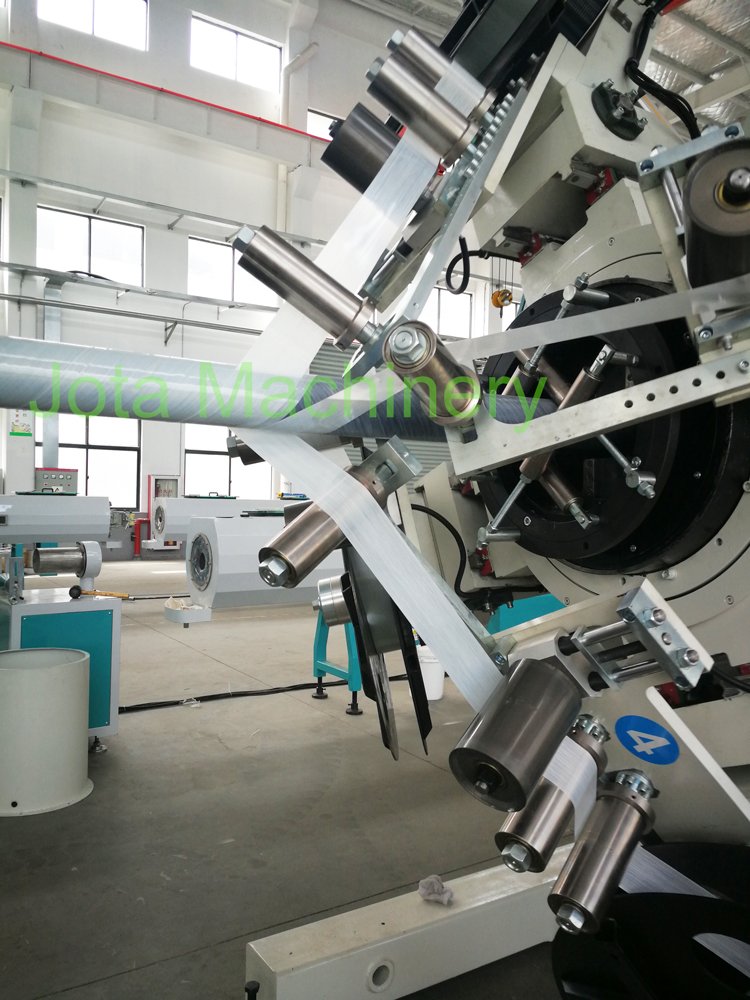
After conducting detailed research, the engineers have recently proved that there are three significant inherent composite properties of the pipes that make their utilization captivating.
These include;
- Corrosion
The gas and oil industry is very corrosive.
That’s not just because of water in the sea, but much from the fluids within the pipes.
With the ‘less hanging’ easy to access crudes getting exhausted, the industry goes to oil and gas streams which are more acidic, thus increasing the risk of leakages because of corrosion.
Composites are way ahead when it comes to resistance in such environments and lack the steam’s corrosion system.
- Fatigue is a crucial challenge in deep-water applications.
There is a likelihood that the fatigue problem will get even harder to solve, primarily because of the deeper water being considered.
However, composite has far better fatigue execution which is numerous orders-of-magnitude better when compared to steel.
- Lightweight
For a classical deep-water riser, the cutback in weight ranges between 70-80 in percentage compared to steel-based risers.
These three points are attractive solutions for increasing safety and reducing cost.
Pipe Concepts and Composite Material Forms
Unbonded Vs Bonded pipes.
If a pipe contains numerous layers, the layers can be joined together (unbonded) or loose (bonded). The terms, however, do not show the use of any adhesive material.
Likewise, a melt-fused thermoplastic composite is referred to as bonded, plus there is no adhesive usage.
An unbonded pipe on the other hand is much adjustable because almost all layers can slide over, but only when the pipe is bent.
Thermoplastic Material
They are also unknown as a thermoset, it is a material that is typically more than the thermoset, which is sometimes brittle.
Generally, thermoset materials are a common site in composite because of the ease of use in processing.
Thermoplastic composites are, however, more novel but not yet adopted by many.
Spoolable pipe Vs Discrete
Spoolabe is typically a very long pipe that goes up to km in length although it is manufactured as a single pipe.
What happens is that, after being produced, it is spooled on a drum for further use and transport.
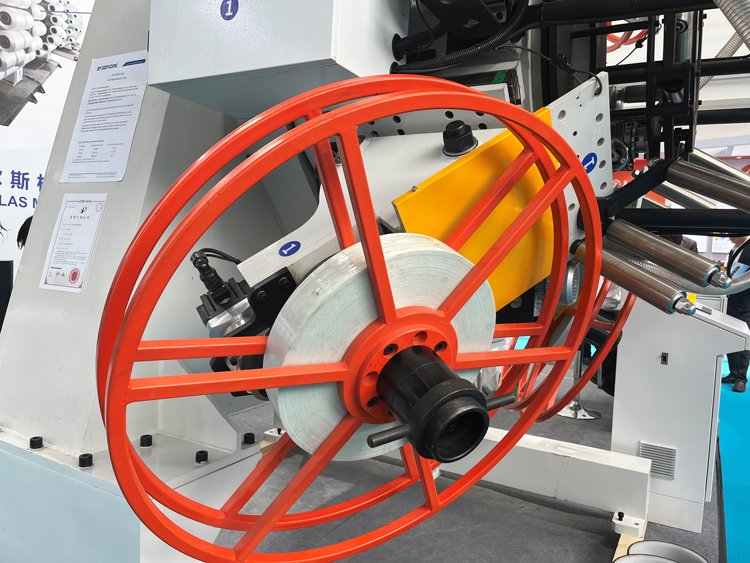
On the other hand, discrete is a short and straight pipe joined into a long string during operation or installation.
Usually, the reinforced thermoplastic pipe (RTP) comprises the outer court inner extrusion system and inner tube extrusion system, cooling setting devices, control systems, winders, and other winding machine sets.
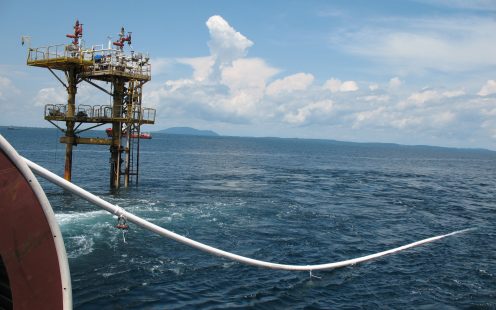
However, for all these systems to properly function and serve a more extended period, selecting the best fiberglass for such purposes is essential.
That is why it is a requirement that you get familiar with,
Choosing the correct fiberglass RTP and TCP pipeline
You should note that fiberglass TCP and RTP machinery line systems can manufacture almost up to DN 200.
Compared to the previous market, it wasn’t easy to use larger diameters because of line winding machines.
That is where Jota Machinery chipped in to redesign the RTP pipe wrapping machine and fibreglass TCP pipe, which can now produce up to DN 630 under whole bonded fiberglass reinforced thermoplastic composite pipe technology.
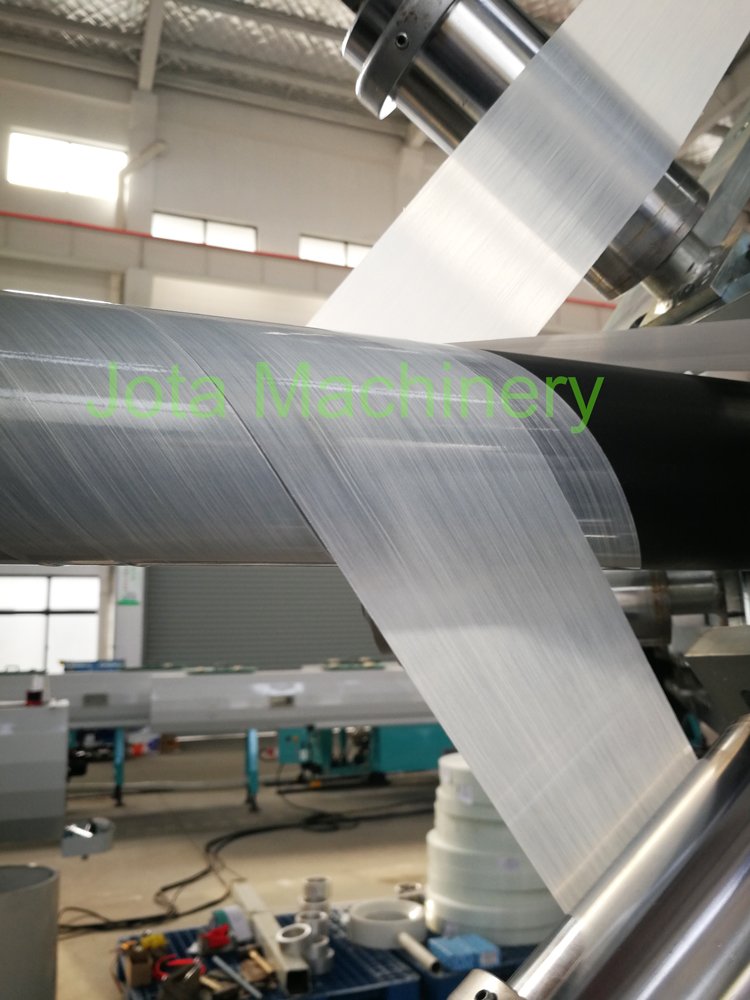
Therefore, as an expert, the following are what you are required to pay attention to when selecting fibreglass reinforced and carbon fibre reinforced thermoplastic plastic composite pipelines.
- Fibreglass tape convertible thickness and width
The topmost wrappable fibreglass composite tape width ought to be 360mm, (that means that a fibreglass tape of width between 90mm-360mm with a preferred nominal width will be a multiplication of 5mm, which will, in turn, enable approximation to be kept at inch sizes)
Contrasting fibreglass wrapping machine sets are also known to fit for different fibreglass composite used tape.
- Select the correct Fibreglass tape wrapping, cooling and heating machinery
Constant Fibreglass reinforced thermoplastic pipe is demanding, especially during the fibreglass tape wrapping process.
These are heating for gaps between individually wrapped fibreglass tape and bonding performance.
The bonding quality is usually based on heating the TCP pipe after wrapping the fibreglass tape layers; cooling, however, is the absolute solution.
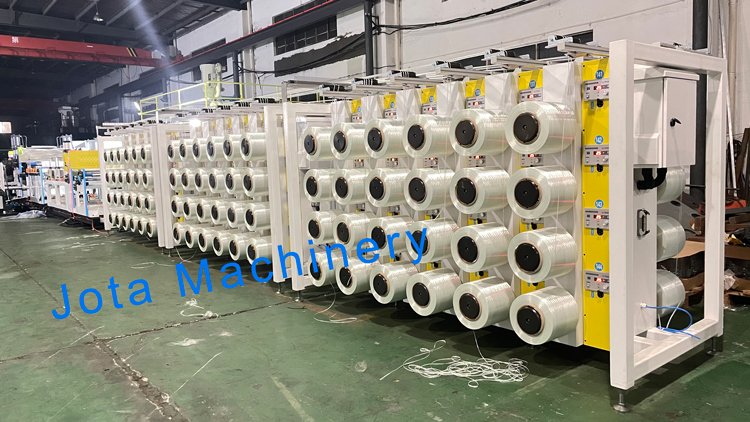
The advancement in technology for heating has got laser and infrared heating.
Nonetheless, because of rapid cooling and heating controls problems, the fusion bonding technology is still on the verge of improvement.
Meaning,
When you search for the new fibreglass reinforced pipe of the thermoplastic composite pipe machine, you will be required to pay close attention to fast cooling and heating technology.
- Fibreglass TCP liner technology
The fibreglass TCP pipe liner will be required to accomplish its function of holding fluid that is transported.
At the same time, the liner material must have sufficient ability to withstand degradation from all fluid constituents.
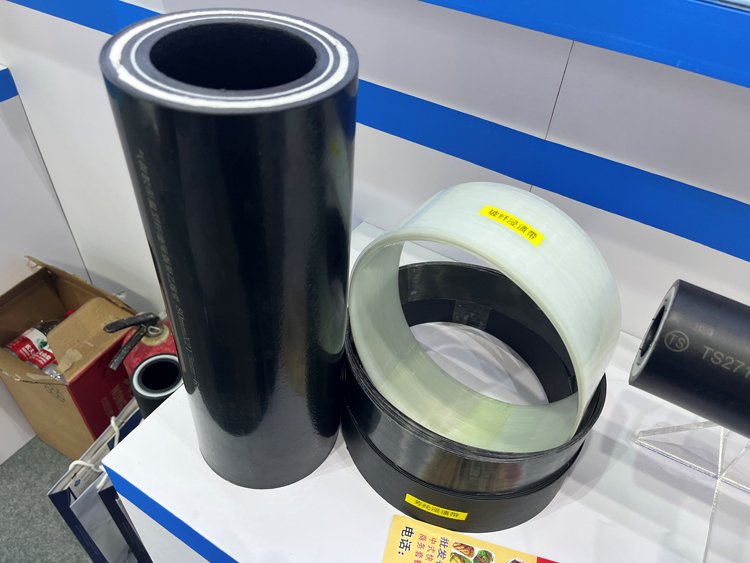
The oil gas composite pipe used in fibre matrix, outer layer, and liner are always of the matching category.
Jota Machinery TCP pipe production for oil gas is in a position to put in (PE) PolyEthylene, PolyAmide (PA12), Polyethylene of increased temperature (PERT) among others as glass, carbon fibres and polymers as reinforcements.
Reflection of the most minor Fibreglass TCP pipe bending radius
Thermoplastic composite pipe ( CFTCP/RTP) construction comes up with outer and inner thermoplastic layers of open-ended bonded structure with carbon fibre or fibreglass as reinforcement material.
But because TCP is an entirely bonded composite pipe type, it is not a supple enough pipe. It means that it is a robust reinforcement pipe.
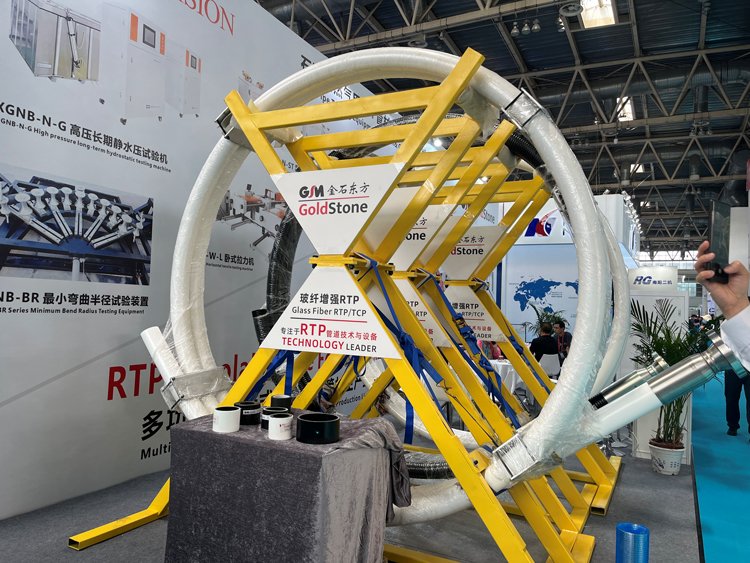
However, when a disfiguration situation happens, the TCP bears an axis direction instead of the strain in the fibre direction. It is because fibreglass tapes were enfolded on the liner pipe.
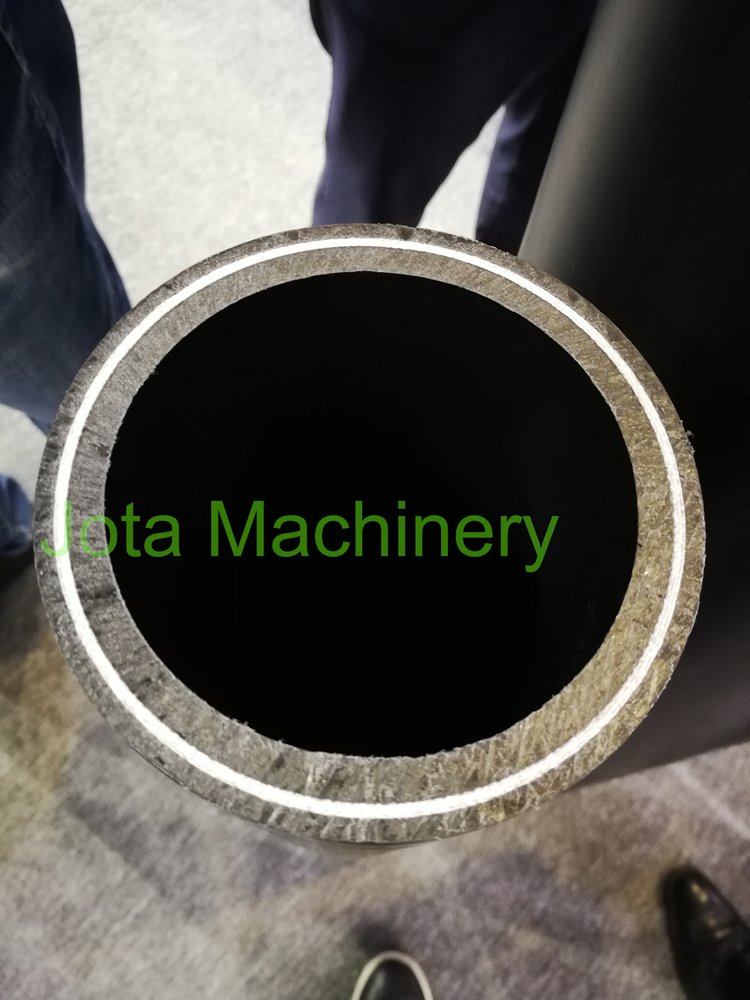
The bending that takes place is usually axial, not direct bending.
In simpler terms, it is a twisted bending. It indicates the fibre direction strain is not the same, relying on fibre direction-reinforcement layer direction.
For that reason, it is not difficult to think that thermoplastic composite pipe design can influence the minimum bending radius.
But in case the composite pipe bending radius is slightly lower than the MBR restriction, there will be harm to the fibreglass reinforcement layer.
The fibre routinely lay up with the TCP axial direction and merged with the fibre hoop direction.
To meet the pressure equilibrium of fibre inclination, the fibre orientation alternates with the direction of the axis at -55 and +55 angles, respectively.
The bending inflexibility of matrix materials acts on the bending stiffness of thermoplastic composite pipe(TCP).
For example, the fibreglass stiffness tape is typically based on the tape instead of individual fibre wire.
Thermoplastic polythene results in less bending stiffness of CFTCP/RTP.

The division of TCP pipelayers is caused because tremendous bending ends up straining the tensile strength.
As experimentation, the least bending radius is at least 14 times the TCP outer diameter, which means that it will increase later to surpass the 14 times mark.
But for raisers, the direction of the axis is directed.
And since the raiser is occasionally used to transfer oil, the pulling load is a bit substantial, which results in increased strains in the direction of the fibre.
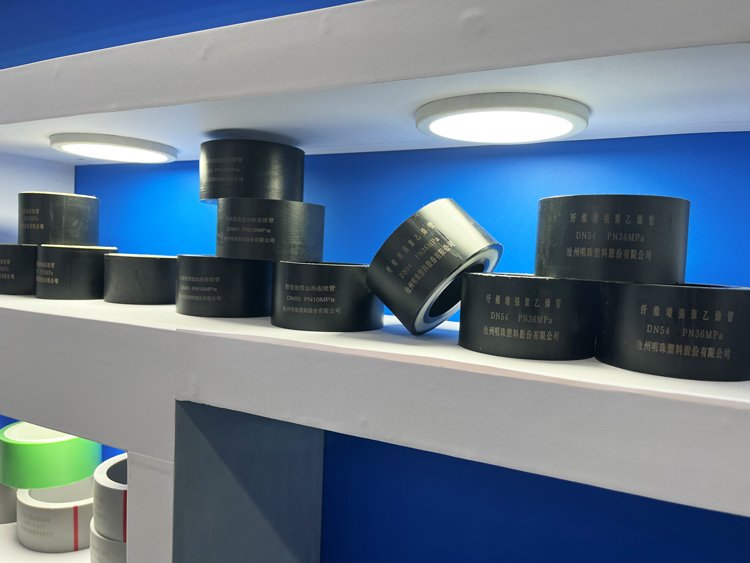
That clarifies that fibre failure is one of the most crucial parts that should be considered when designing thermoplastic composite pipes (TCP).
At Jota Machinery, our research reveals that the power tensile of fibre is almost twice the compressive solidity; therefore, fibre failure in compression becomes the primary failure mechanism in bending.
Importance of Cooling and Heating TCP pipeline
The process of heating TCP and RTP pipes usually goes up from 900-1000 degrees centigrade.
That is basically (1620-1800F) on the spot to attain the quality fusion bonding execution between the fibreglass tape and the inner layer.
At the same time, fast cooling is also vital and, more so, after an individual heating process to prevent deformation of the liner.
Fibreglass TCP tape typically contains tensile force within the liner during the TCP wrapping process.
If the TCP core is too pulpy due to an inadequate cooling plan of action, the liner will deform during the procedure of wrapping.
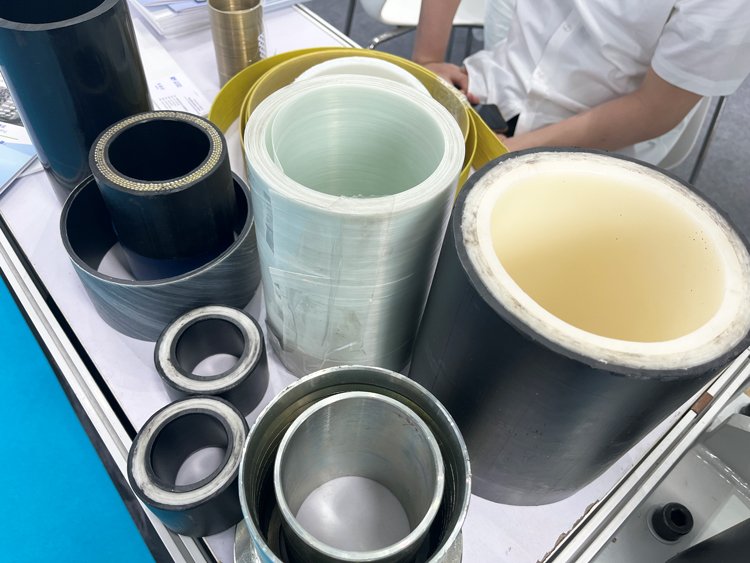
That means that for the healing process, the temperature for heating will at least be 700 degrees celsius.
Jota Machinery can attain a range of temperature between 900-1000 degrees celsius to achieve high-quality fusion bonding performance.
In each wrapping, the cooling process is the same, just as mentioned before; that is to say, fast heating and cooling during the fusion bonded procedure are relatively crucial after wrapping each reinforced fibreglass layer.
RTP Reinforced Spiral Pipe Extrusion Line Performance
As you have already seen, the RTP Reinforced Spiral Pipe Extrusion line comprises the outer coating and inner tube extrusion systems.
It also has several sets such as control systems, cooling and heating, among others.
The use of computerised centralised data control allows exact control of the correct weight control of inner tube, automatic tube-lined coiling, simultaneous traction control, and multi-station error-free layer control within the same process.
The Applications and Advantages of RTP pipe
The RTP Reinforced composite pipe is a brand type of plastic composite pipe that repels corrosion, flexibility and high pressure.
They are used in water supply, petroleum, and other numerous increased pressure transportation environments. The inner layer of the product is also made so that it is resistant to corrosion.
At the same time, It is also resistant to polyethylene pipe, plus the middle layer is also a reinforced winding layer while the outer layer is a safeguard to polyethylene layer.
The pressure of the aramid-reinforced RTP tube while at work goes all the way up to 9-14MPa while the burst pressure rises as high as 40MPa.
Advantage of RTP pipeline
The use of gas and oil products daily is one of the safest ways of providing those products.
You can take, for example,
From the time one gets up in the morning hours until night time, you will realise that places that utilise oil and gas energy transported by pipeline are almost everywhere.
Gas can provide electricity, cook food, heat our houses; the list is long. Petroleum products from oil also power trains, automobiles and even planes.
In general, oil and gas have a wider variety even now than some years back.
Hence, the indispensable oil and gas transportation, gas products, and pipeline requirements are becoming more analytical.
Initially, steel pipes and iron were used when making gas and oil transportation, then came stainless steel pipes. However, metal pipes have got some severe demerits:
- Several connections are required in leakage and metal pipes, making it easier to happen.
- The pipes have to be maintained several times within a single year.
- The steel pipes quickly corrode. The pipeline has to be, therefore, protected by a corrosion-proof layer. However, in case of the layer breaks, dot-corrosion remains inevitable.
Why Jota Machinery stands out
Frankly, there are more than enough reasons why our company stick out a mile, but to mention a few,
Jota machines are substantially used to manufacture cables, conductors and electrical coils.
Our machines are not just limited to the manufacturing of cables as they are also employed in the mass production of Reinforced Thermoplastic Pipe (RTP) for gas and oil pipelines.
Apart from the sizable production of RTPs, Jota Machinery is also a leading manufacturer of both winding machines and precision taping, which are perfectly appropriate for energy and electrical industries.
From the original open-ended pattern, via universal client assistance, we extend professional solutions that evolve from direct comprehension of our consumers’ wishes and demands.
Not to forget that we have years of experience in the manufacture of the best Reinforced Thermoplastic Pipe (RTP)
You only need to reach out to us and enjoy the finest experience with our products.




